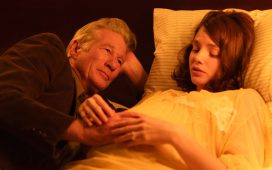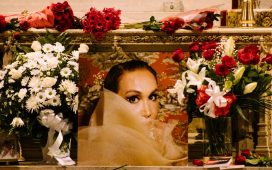If one measure of good art is its capacity to make us feel, then the best works often embody an invitation to grow. Multidisciplinary creator JJJJJerome Ellis has a term for offerings that act as olive branches to a gentler world: “gatherings.” I can assure you that what may at first brush sound like abstract art-speak takes on a more visceral quality when experienced in the flesh. Two summers ago, I had the opportunity to enter Ellis’ sonic universe of careful anticipation myself.
That evening, the artist, who uses all pronouns, strode down the grassy hill of the Getty Museum in Los Angeles wearing a flowing floral gown and carrying a saxophone. They stopped under a canopy of bougainvillea, gazing out at the small audience sprawled among the dripping fountains and rose bushes. As the sunlight grew golden, Ellis read a poem about time. She stammered throughout — a pattern of speech, I would learn, they have navigated since childhood. It was during those pauses between words that I perceived a shift overtake the audience. From our patience grew a kinder kind of listening: together, we became no longer attendees of a show, but participants in a moment — one whose intimacy came with a choice.
“To be vulnerable with someone is to give them the ability to hurt, or to further the connection,” Ellis tells me over the phone. “That’s how I think of stuttering: You can interrupt me, you can roll your eyes, you can make fun of me, or you can gather inside. You can go into that moment, and you can practice being in-time with me.”
Once JJJJJerome Ellis drew the saxophone to his lips, playing a series of clipped notes that bloomed into rich, airy melodies, their work of transubstantiation revealed itself in full: The stammer was no longer an impediment. It was music.
The descendent of a long line of preachers, Ellis once sought to counteract the stutter, to bend their voice into more normative patterns. Yet it was in church that the Virginia-based artist first saw speech — specifically the manipulation of rhythm, volume, timbre, tone, and cadence — as a medium where “ceremony…might be housed,” they say.
This attunement to the aesthetic possibilities of the collective appears across Ellis’ ever-expanding body of work. In “Aster of Ceremonies,” a book, audio, and performance based project, Ellis invokes a cast of ancestors to join them in a meditation on what it means for Black and disabled people to take their freedom. With “Benediction,” a musical ceremony that honors plant kin, Ellis communes with the ferns and flowers that aided enslaved people in their journeys across 19th Century Virginia.








